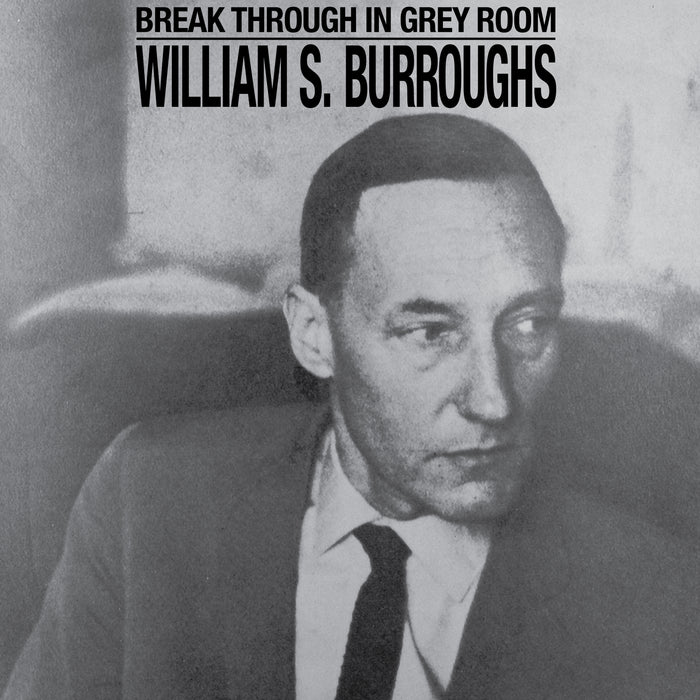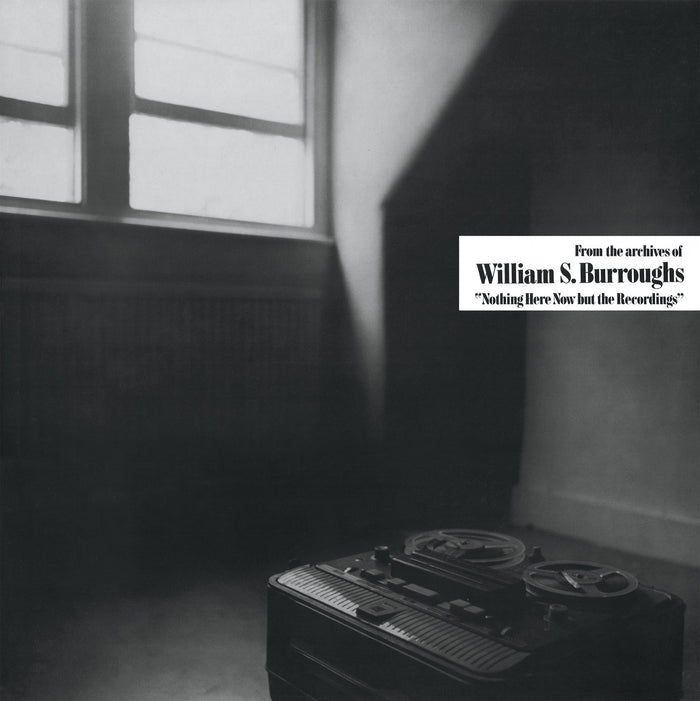About William S Burroughs
Dais Records (in collaboration with the Estate of William S. Burroughs) presents official vinyl and CD reissues of William S. Burroughs Nothing Here Now but the Recordings and Break Through in Grey Room. Remastered by Josh Bonati. Available for pre-order now across limited colorways, out April 28th.
In 1980, Genesis P-Orridge and Peter “Sleazy” Christopherson of (then-)Throbbing Gristle travelled to New York City to meet up at the fortified apartment, known as The Bunker, of famed beat writer and cultural pioneer William S. Burroughs and his executor James Grauerholz. Genesis and Sleazy started the daunting task of compiling the experimental sound works of Burroughs, which, up until that point, had never been widely heard.
During those visits, Burroughs would play back his tape recorder experiments featuring his spoken word “cut-ups”, collaged field recordings from his travels and his flirtations with EVP recording techniques, pioneered by Latvian intellectual Konstantins Raudive. Over the following year, P-Orridge, Christopherson and Grauerholz spent countless hours compiling various edits, each collection showcasing Burroughs sensitive ear and experimental prowess for audio anomaly within technical limitations. In early 1981, Burroughs had relocated to Lawrence, KS to escape the violence and manias of New York City life. There, P-Orridge and Christopherson put the finishing touches on the record that would be known as Nothing Here Now but the Recordings. Released in Spring 1981, the album would end up as the final release on Industrial Records, brought about by the dissolution of Throbbing Gristle.
Break Through in Grey Room (compiled in 1986 by producer Bill Rich) features Burroughs's experimental recordings from 1961 to 1976, including field recordings of the Master Musicians of Jajouka, collaborations with mathematician Ian Sommerville and painter/cut-up originator Brion Gysin.
The album documents Burroughs during his time in Europe and England, working with Ian Sommerville on recording with the 'cut-up' technique. Sommerville's technical background enabled him to contribute to the early development of sound-and-light shows in London, leading to work with gear provided by Paul McCartney in an apartment owned by Ringo Starr. Experimental in nature, the record is as much an exhibition of studio and composition technique as it is a document of underground culture at that time.
Releases
-
04.2023
-
04.2023

